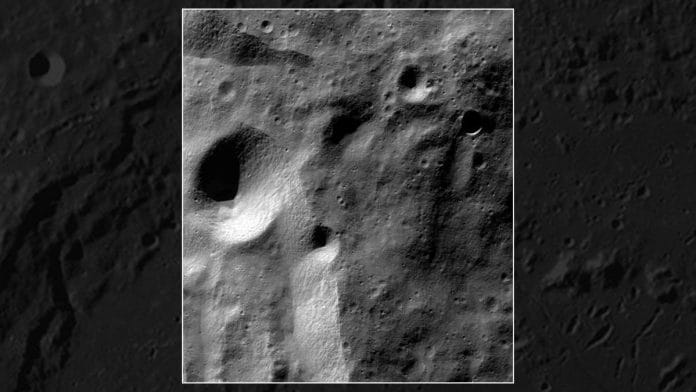Bengaluru: In September this year, the Chandrayaan-2 mission made for an international spectacle for its technological leap — before losing its Vikram lander. But its success came on the back of India’s first moon mission, Chandrayaan-1, which entered the lunar orbit exactly 11 years ago.
Launched in October 2008, the Indian Space Research Agency (ISRO)’s Chandrayaan-1 remained operational until August 2009. It was intended to orbit and study the moon for two years.
However, after just about 10 months, the orbiter encountered communication issues after its star tracker failed and its thermal shielding gave up. Despite being declared complete before its designated lifespan, it was still called successful.
The first Chandrayaan mission was instrumental in the discovery of water on the moon and then hit the headlines again a decade later for its own surprising rediscovery in orbit around the moon.
Also read: All you want to know about the future of crashed Chandrayaan-2 lander Vikram
Discovery of water
On 14 November 2008, the Moon Impact Probe (MIP) on-board the Chandrayaan-1 orbiter separated from it at a height of 100 km and struck the lunar south pole. The impact was controlled and the probe hit the designated spot.
The location of impact was the Shackleton crater, and the point of impact was named Jawahar Point. When it touched the soil, the MIP ejected the lunar soil (called regolith) off the ground, and revealed the presence of water ice.
This made India the fourth country to place a flag on the moon, despite it being just an insignia.
During its 25-minute descent, the probe’s Chandra’s Altitudinal Composition Explorer (CHACE) recorded evidence of water from spectral readings. But what followed was a mild dispute between US space agency, National Aeronautics and Space Administration (NASA) and ISRO over credit for the discovery of water.
On 24 September 2009, NASA published in the Science journal that its Moon Mineralogy Mapper (M3) instrument, which was also on-board the Chandrayaan orbiter, had detected water on the moon from orbit. Just a day later, ISRO announced that MIP had discovered water three months before M3 did. The statement further said the discovery was not announced because ISRO waited until NASA’s confirmation of water before making the discovery claim. The dispute remains unsettled.
A decade later, in 2017, the M3 instrument’s data was reanalysed and revealed once again more solid evidence of the presence of water in the shaded regions of craters near the lunar poles.
Orbiter rediscovery
In August 2008, ISRO lost communication with the orbiter and could no longer track Chandrayaan-1 in orbit. The spacecraft was originally scheduled to crash into the lunar surface by 2012, but ISRO was unable to confirm if the crash had occurred or if it continued to be in orbit.
However, in 2017, NASA announced that using ground-based radar here on Earth, it was able to detect its own Lunar Reconnaissance Orbiter (LRO) as well as Chandrayaan-1.
In a statement, the agency said, “Finding LRO was relatively easy, as we were working with the mission’s navigators and had precise orbit data where it was located. Finding India’s Chandrayaan-1 required a bit more detective work because the last contact with the spacecraft was in August of 2009.”
The US agency discovered that the orbiter is still circling around the moon 160 km above the surface. It completed an orbit of the moon every two hours and eight minutes as expected, and continues to orbit the moon today with an uncertain future.
Also read: ISRO releases first illuminated images of moon taken by Chandrayaan-2’s orbiter







Sandhya Ramesh – you articles add value and make THE PRINT very eclectic but much more value will be added from in-depth interviews with scientists and astrophysicists.